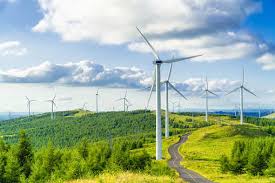List of Local Winds around the Globe
The Local winds around the world are formed through the heating of land. In coastal regions, the sea breezes and land breezes are important factors in a location’s prevailing winds. The sea is warmed by the sun more slowly because of water’s greater specific heat compared to land. As the temperature of the surface of the land rises, the land heats the air above it by conduction. The warm air is less dense than the surrounding environment and so it rises. This causes a pressure gradient of about 2 millibar from the ocean to the land. The cooler air above the sea, now with higher sea level pressure, flows inland into the lower pressure, creating a cooler breeze near the coast. At night, the land cools off more quickly than the ocean because of differences in their specific heat values. This temperature change causes the daytime sea breeze to dissipate. When the temperature onshore cools below the temperature offshore, the pressure over the water will be lower than that of the land, establishing a land breeze, as long as an onshore wind is not strong enough to oppose it.
Local winds near Mountains
There is a different explanation for local winds near mountains. Over elevated surfaces, heating of the ground exceeds the heating of the surrounding air at the same altitude above sea level, creating an associated thermal low over the terrain and enhancing any thermal lows that would have otherwise existed, and changing the wind circulation of the region. In areas where there is rugged topography that significantly interrupts the environmental wind flow, the wind circulation between mountains and valleys is the most important contributor to the prevailing winds.
Barrier Jet
The mountains and valleys are capable to distort the airflow by increasing friction between the atmosphere and landmass by acting as a physical block to the flow, deflecting the wind parallel to the range just upstream of the topography, which is known as a barrier jet. This barrier jet can increase the low level wind. Wind direction also changes because of the contour of the land. If there is a pass in the mountain range, winds will rush through the pass with considerable speed because of the Bernoulli principle that describes an inverse relationship between speed and pressure. The airflow can remain turbulent and erratic for some distance downwind into the flatter countryside. These conditions are dangerous to ascending and descending airplanes.
List of major Local Winds
- Abroholos: squall frequent wind that occurs from May through August between Cabo de Sao Tome and Cabo Frio on the coast of Brazil
- Amihan : northeasterly wind across the Philippines
- Bayamo : violent wind on Cuba’s southern coast
- Bora : northeasterly from eastern Europe to northeastern Italy
- Calima : dust-laden south to southeasterly wind blowing in the Saharan Air Layer across the Canary Islands
- Cape Doctor : dry south-easterly wind that blows on the South African coast in summer
- Chinook : warm dry westerly off the Rocky Mountains
- Elephanta : strong southerly or southeasterly wind on the Malabar coast of India
- Föhn : warm dry southerly off the northern side of the Alps and the North Italy, the name gave rise to the fén-fēng or ‘burning wind’ of Taiwan
- Fremantle Doctor : afternoon sea breeze from the Indian Ocean which cools Perth, Western Australia during summer
- Gregale : northeasterly from Greece
- Habagat : southwesterly wind across the Philippines
- Harmattan : dry northerly wind across central Africa
- Karaburan : “black storm”, a Spring and Summer Katabatic wind of central Asia
- Khamsin : southeasterly from north Africa to the eastern Mediterranean
- Khazri : cold north wind in the Absheron Peninsula of the Azerbaijan Republic
- Kona : southeast wind in Hawaii, replacing trade winds, bringing high humidity and often rain
- Košava : strong and cold southeasterly season wind in Serbia
- Lodos : southwesterly towards Turkey. Strong “Lodos” events occur 6 – 7 times a year bringing 35 kt winds into Marmara Sea. The winds are funneled SE from the Mediterranean and through the Dardanelles Strait.
- Loo : hot and dry wind which blows over plains of India and pakistan.
- Mistral : cold northerly from central France and the Alps to Mediterranean
- Monsoon : mainly south-westerly winds combined with heavy rain in various areas close to the equator
- North wind : northern cold winds blowing from the Gulf of Mexico to the Isthmus of Tehuantepec
- Nor’easter : strong storm with winds from the northeast in the eastern United States, especially New England
- Nor’wester : wind that brings rain to the West Coast, and warm dry winds to the East Coast of New Zealand’s South Island, caused by the moist prevailing winds being uplifted over the Southern Alps, often accompanied by a distinctive arched cloud pattern
- Pampero : Argentina, very strong wind which blows in the Pampa
- Simoom : strong, dry, desert wind that blows in the Sahara, Israel, Jordan, Syria, and the desert of Arabia
- Sirocco : southerly from north Africa to southern Europe
- Sundowner : strong offshore wind off the California coast
- Zonda wind : on the eastern slope of the Andes in Argentina


